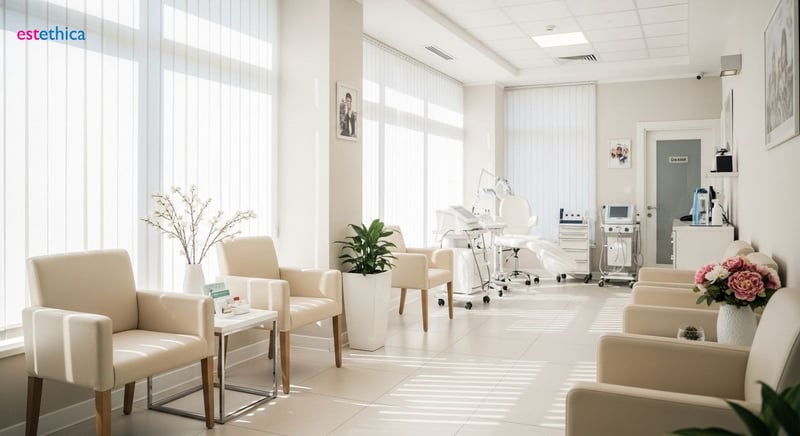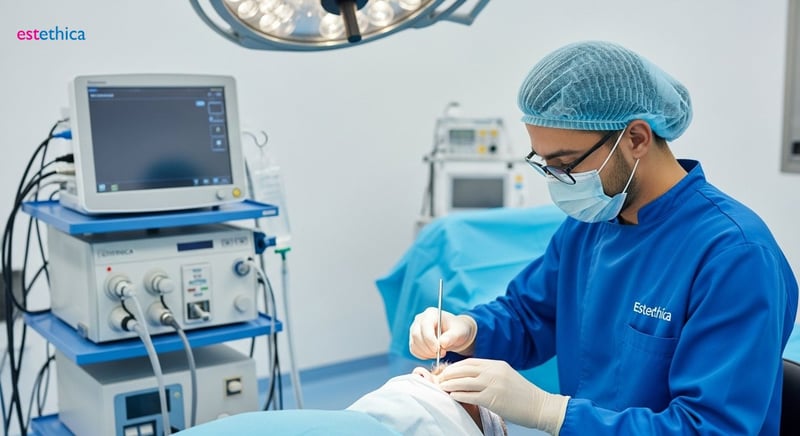Beard Restoration: Is a Facial Hair Transplant Right for You?
Discover if a beard transplant is the right choice to achieve your desired facial hair look and confidence.
Beards have become a significant fashion statement and personal style marker for many men today. With the evolution of grooming trends, a growing number of individuals seek permanent solutions to achieve fuller, well-formed beards. Facial hair transplants, particularly beard transplants, have emerged as a revolutionary option. This blog will delve into the aspects of beard restoration, exploring its efficacy, process, and permanence, while answering the crucial question: Is a facial hair transplant right for you?
Follicular Unit Extraction (FUE): Revolutionizing Beard Transplants
The Mechanics and Benefits of FUE in Beard Transplants
The advent of Follicular Unit Extraction (FUE) has marked a significant shift in hair transplantation procedures, including beard transplants. This technique involves extracting individual hair follicles from a donor area, typically the back of the scalp, and implanting them in the beard region. Unlike traditional methods, FUE does not require a linear incision, which minimizes scarring and reduces recovery time. The precision of FUE ensures that transplanted hair aligns with the natural growth pattern of facial hair, offering a seamless and natural appearance. It’s particularly suitable for creating dense and sculpted beards, making it a preferred choice for many seeking beard restoration.
Key Advantages of FUE Beard Restoration
- Minimal Scarring: FUE leaves tiny, almost invisible scars, making it ideal for those who prefer shorter hairstyles.
- Natural Look: The precise placement of individual follicles ensures transplanted hair grows in a pattern that mimics natural facial hair.
- Faster Recovery: Patients typically experience a quicker recovery compared to traditional strip harvesting methods, allowing them to resume normal activities sooner.
FUE's approach transforms a mere cosmetic procedure into an art form, where each follicular unit is meticulously harvested and placed to match the natural aesthetics of the patient’s face. This tailored approach enhances the overall look and feel of the beard, providing a result that seamlessly integrates with existing facial features. As a result, the success rates of FUE procedures in beard transplants have significantly influenced the preference of both surgeons and patients, underlining its effectiveness in beard restoration.

Beard Transplant Before & After: What Results Can You Realistically Expect?
What to Realistically Expect After a Beard Transplant
Beard transplants have shown transformative results, offering a remarkable experience for many men. Before the procedure, patients often experience patchy, sparse beard growth or complete absence of a beard due to various factors such as genetics, injury, or hormonal imbalances. Post-transplant, individuals typically notice significant improvements in beard fullness and overall facial aesthetics. However, it's essential to maintain realistic expectations. The final results, usually visible after 4 to 6 months, reflect the natural texture and look of your hair. Its success largely depends on an individual's existing hair characteristics and the expertise of the surgical team. Many patients report enhanced self-esteem and satisfaction with their appearance as a result of the procedure.
Factors Influencing Beard Transplant Outcomes
- Hair Texture and Density: The characteristics of your existing hair significantly impact the transplanted beard's final appearance.
- Surgeon's Expertise: The skill and experience of the surgical team play a crucial role in achieving a natural-looking and dense beard.
- Individual Healing Variances: Healing capabilities vary among individuals, affecting the timeline and overall success of the transplant.
The desired density and style of the beard transplant must be clearly communicated with the surgeon. At estethica Global, each procedure is tailored to meet the specific needs and aesthetic goals of the patient, ensuring optimal results. The clinic’s commitment to using advanced techniques and personalized care is why many clients achieve results that not only meet but exceed their expectations.

Is a Beard Transplant Permanent? Understanding Long-Term Growth
Understanding the Longevity of Transplanted Facial Hair
The question of permanence is central for anyone considering a beard transplant. Fortunately, a successfully executed procedure offers a lasting solution to sparse or absent facial hair. The durability of a beard transplant stems from the inherent properties of the transplanted hair follicles. These follicles, typically harvested from the scalp's donor area, retain their genetic coding, which programs them to grow for a lifetime. This characteristic ensures that once transplanted, these hairs will continue to thrive in their new location. The initial weeks post-transplant might involve a shedding phase, a temporary setback where transplanted hairs fall out before new growth begins. This is a normal part of the hair growth cycle and does not affect the long-term outcome. The overwhelming majority of patients experience enduring results, making a beard transplant a permanent way to achieve a fuller, more robust beard.
Factors Influencing the Success of a Beard Transplant
- Skill of the Surgeon: The expertise of the surgical team is critical in ensuring the transplanted follicles are correctly harvested and placed for optimal growth.
- Individual Health: A patient's overall health and lifestyle can affect hair growth and the success of the transplant.
- Post-Operative Care: Following the recommended post-operative care is crucial for ensuring the survival and healthy growth of the transplanted follicles.

Finding the Best Beard Transplant Clinic: Key Factors to Consider
Assessing Clinic Experience and Specialization in BeardTransplants
Selecting the right clinic for a beard transplant goes beyond aesthetics; it's about entrusting your appearance to skilled professionals. Clinics with specialized surgeons who have extensive experience in FUE and DHI techniques are essential. These experts demonstrate a proficiency that is crucial for achieving natural-looking and dense results. Furthermore, a clinic's commitment to ongoing training and adaptation to new techniques indicates that they are up-to-date with the latest improvements in beard restoration. Assessing the surgeon’s portfolio, including before and after photos, provides real insight into their capabilities and aesthetic style, helping you make a well-informed decision for your facial hair transformation.
Essential Checks for Hygiene and Post-Operative Support
- Technology and Hygiene Standards: State-of-the-art facilities with adherence to strict hygiene protocols are vital for minimizing risks and ensuring safety during the beard transplant process.
- Comprehensive After-Care: Support following the procedure, including consultations and care guidelines, is crucial for optimal healing and achieving the best possible results.
- Patient Reviews and Testimonials: Feedback from previous patients can provide insights into the quality of care and the results typically achieved by the clinic.
Transform Your Look: The Ultimate Guide to Beard Transplant
FUE and DHI Techniques Delivering Natural-Looking Beard Transplants
Personalized Care and Advanced Technology for Optimal Beard Transplant Outcomes
Frequently Asked Questions
What is a follicular unit extraction beard transplant (FUE), and what are its benefits?
What kind of results can I realistically expect from a beard transplant before and after the procedure?
Is a beard transplant permanent, and how can I ensure long-term growth?
What key factors should I consider when finding the best beard transplant clinic?
Achieve your aesthetic goals with estethica's expert guidance and personalized treatment plans.
📞 Book Your Free Consultation!